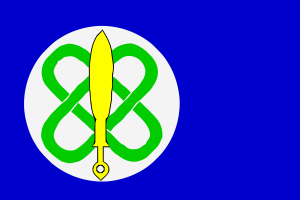Language/Yoruba/Vocabulary/Shapes
Introduction
If you are about to start your journey into learning Yoruba, congratulations! You have taken the first step towards understanding the language and culture of one of the most populous ethnic groups in West Africa.
In this lesson, we are going to learn about shapes. You might be thinking, "What can I do with shapes?" Well, once you learn the names of basic shapes in Yoruba and how to use them to describe objects and their characteristics, you will realize that shapes are very important in the Yoruba language. You will be able to describe things around you with more precision and accuracy.
Are you ready? Let's get started!
Basic Shapes in Yoruba
In Yoruba, there are a few basic shapes. These are:
- eẹ́fín (circle)
- bàtà (rectangle)
- <eṃàná (triangle)
- <eṃàdápọ̀ (square)
- <eṃàbùlé (oval)
- <eṃàjàjá (diamond)
- <eṃàdúkú (cone)
- <eṃàtamá (pyramid)
- <eṃàbàlé (cube)
- <eṃàjélè (cylinder)
Now let's learn how to use these shapes to describe things in Yoruba.
How to Use Shapes to Describe Objects and Their Characteristics
Using Shapes in Sentences
Here are some examples of how to use shapes in sentences:
| Yoruba | Pronunciation | English Translation |
|---|---|---|
| eẹ́fín | eh-ay-feen | A circle is round. |
| bàtà | bah-tah | The book is rectangular. |
| <eṃàná | an-ah | The roof is triangular. |
| <eṃàdápọ̀ | ah-dah-paw | The tile is square. |
Describing Shapes of Objects
Here are some example sentences for describing the shapes of objects:
- Bókùn kan ní bàtà. (There is a box that is rectangular.)
- Bàbàrá ò mọ́ èdè Yorùbá-ti ò fẹ́ṣẹ́ èré àládé ní ẹlẹ́dẹ̀ẹdọ̀. (Barbara doesn't know Yoruba language but she likes to draw diamond shapes in her sketchbook.)
- Ó fẹ́ ìwé àlùkọ́ ní ìwé ìtàn, ó rí êbù ní ìkókó. (He loves reading historical books and he found a cone-shaped one in the corner.)
Using Shapes in Proverbs and Idioms
Shapes are also used in proverbs and idioms in Yoruba. Here are some examples:
- Ìwà kan ló bù Adánà (A person's character is like an ibeji drum, which is oval) - This proverb means people have unique personal character qualities that they are known for.
- Ẹdá ń rogbó fìlà, filà ń rogbó ẹdá (The triangle is trying to uproot the hat; the hat is trying to cover the triangle) - This proverb means two people are stubborn and they are fighting each other to get their way.
- Kì í dá íyà á lọ́pò tí ọ̀tá lè ló (A round stone cannot sit comfortably in a square mortar) - This proverb means that a person cannot fit in with a group that does not share similar attributes or qualities.
Conclusion
Congratulations! You have now learned about the basic shapes in Yoruba and how to use them to describe objects and their characteristics. You may have realized that shapes are used quite frequently in everyday conversation, proverbs, and idioms. This knowledge can help you navigate and engage more deeply with the Yoruba language and culture. Keep practicing and you will be surprised at how much you can accomplish.

